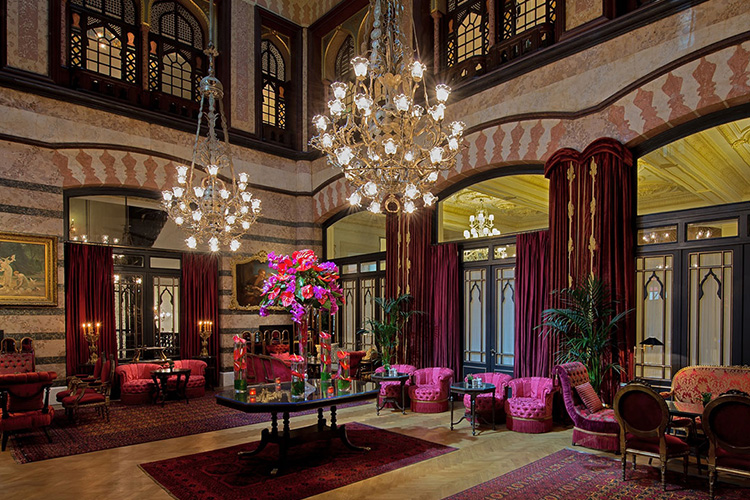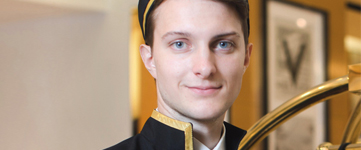The Best Examples of Orientalist Style That You Can Visit in Istanbul!

Orientalism is a Western field of research that examines the lives and cultures of Eastern societies. Western artists who study Eastern culture and produce works in many fields such as painting, music, architecture, sculpture, and dance are also called orientalists. Orientalism, also called Oriental Science, began towards the end of the 18th century, and became widespread in Europe thanks to Western artists. There are examples of orientalist style in Istanbul, which has hosted many civilizations throughout history. Here are the 4 best examples of the Orientalist style, which amazes with its magnificent architecture, and you should certainly visit it in Istanbul!
A Fascinating Beauty with Its Magnificent Design: Çırağan Palace

Çırağan Palace is one of the leading examples of orientalist architecture that started between 1863 and 1880, is located in a place known as “Kazancıoğlu Gardens”, between Beşiktaş and Ortaköy. The palace, which is 115 meters wide and 664 meters long, covers a very large area of 76,360 square meters in total. The palace consists of five sections. These areas are called Ceremonial and Mabeyn Offices, Imperial Office, Harem and Crown Office.
The most magnificent part of the palace is the apartment in the middle that belongs to the Sultans. This room attracts attention with its facade view, which is animated using marble columns. Since geometric patterns are generally used in the design of Çırağan Palace, the decorations are also compatible with geometric patterns.
Çırağan Palace, which carries the most important elements of Orientalism, offers visitors an architectural feast with all its splendor. When you visit Istanbul, you should certainly visit this magnificent structure that extends from Beşiktaş to Ortaköy.
One of the Best Examples of Orientalist Style: Sirkeci Train Station
Considered to be one of the most magnificent examples of orientalist architecture, Sirkeci Train Station, also known as Istanbul Train Station, is located in the Sirkeci district of Fatih district, also known as the historical peninsula on the European Side. The building, which is a train station belonging to TCDD, was built by August Carl Friedrich Jasmund in 1889-1890.
The low arch located above the door on the symmetrically designed entrance façade of the building is made of pink and white stones. There is a twelve-segmented rose window above the arch. This window is surrounded by an arch built with marble stones of two colors. The keystone of the arch is decorated with a stalactite palmette motif. These palmette motifs are also found at the ends of the metal frame that divides the window into slices.
Sirkeci Train Station is one of the best examples of Orientalist architecture in the world and offers you an excellent experience. By visiting Sirkeci Train Station, you can examine all the details of the building and witness its history.
Icon of Istanbul: Entrance Gate of Istanbul University

The historical entrance gate, which is the symbol of Istanbul University, was designed by the French architect Borgues. The gate is actually built for the Golden Gate, the main gate of the walls of Istanbul. However, this did not turn out the way it planned originally and was used as the main gate of the Ministry of War. According to some researchers, the gate was built according to the entrance gate plans of the city designed by Engineer Bekir Pasha during the reign of Abdulmecid. Today, this gate adorns the entrance of Istanbul University.
The entrance gate of Istanbul University has magnificent architecture built in orientalist style. The door has a monumental arch and consists of three adjacent pieces. The main entrances of the door consist of a large arch opening in the middle and smaller arch openings on either side. There are two-story rooms designed in the form of bastions with dents on both sides of the building. The floors of the rooms consist of flat arched doors and windows. There are horseshoe-arched windows on the first floor of the gate. Made of pink and white stones, the slightly pointed, horseshoe-shaped large arch is planned in two stages.
If you ever come to Istanbul, you should certainly visit Istanbul University and see this magnificent building.
A Living History from Past to Present: Pera Palace Hotel

Located in the Beyoğlu district of Istanbul, the Pera Palace Hotel is a unique building that serves as a museum hotel. The hotel, which has the status of a first-degree historical monument, combines neoclassical, art nouveau and orientalist architectural styles.
Pera Palace Hotel, whose construction started in 1892 and opened in 1895, was designed by the well-known architect of that period, Alexandre Vallaury and his assistant Henri Duray. Wood, glass, and marble materials are mostly used in hotel architecture. Orientalist style is adopted in the hotel’s interior decoration and primary spaces. The place where the Orientalist architectural style is most visible is the Kubbeli Lounge on the ground floor. This hall is quite large and extensive. The entire plan of the hotel is made according to this hall.
Pera Palace Hotel stood out as Turkey’s first hotel of European standards when it was opened in 1895. You can witness history by visiting Pera Palace Hotel, which is in service to this day and fascinates its guests with its unique architecture and stay in the rooms where many important people have stayed.
These articles may also be of interest to you:
Destination Guide for Those Who Will Travel to Istanbul During the Summer
Istanbul’s most Beautiful Sightseeing Places
About the Legendary City of Istanbul… 5 Historical Places That Continue to Host Their Guests Today



